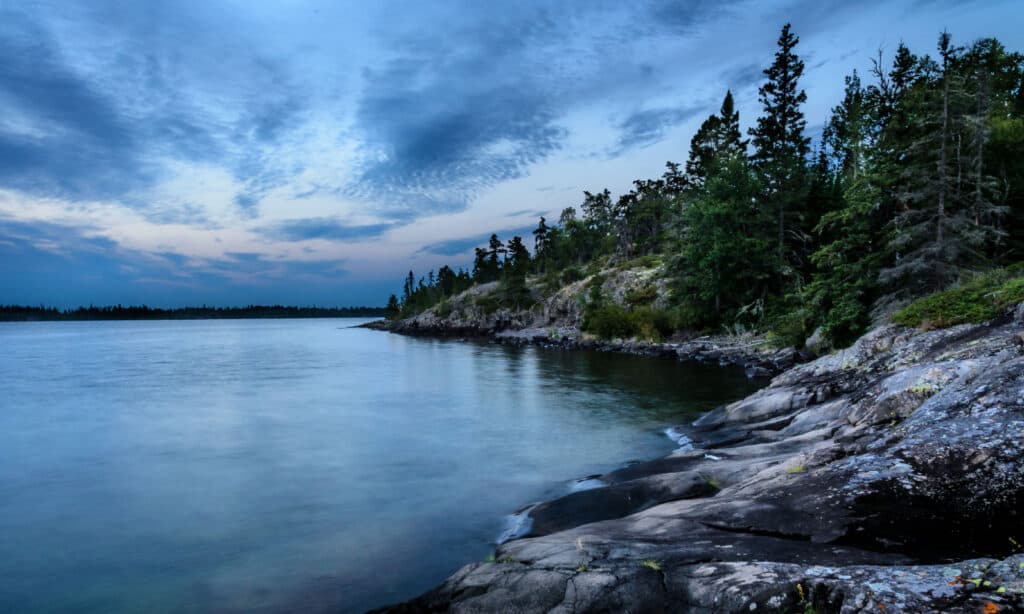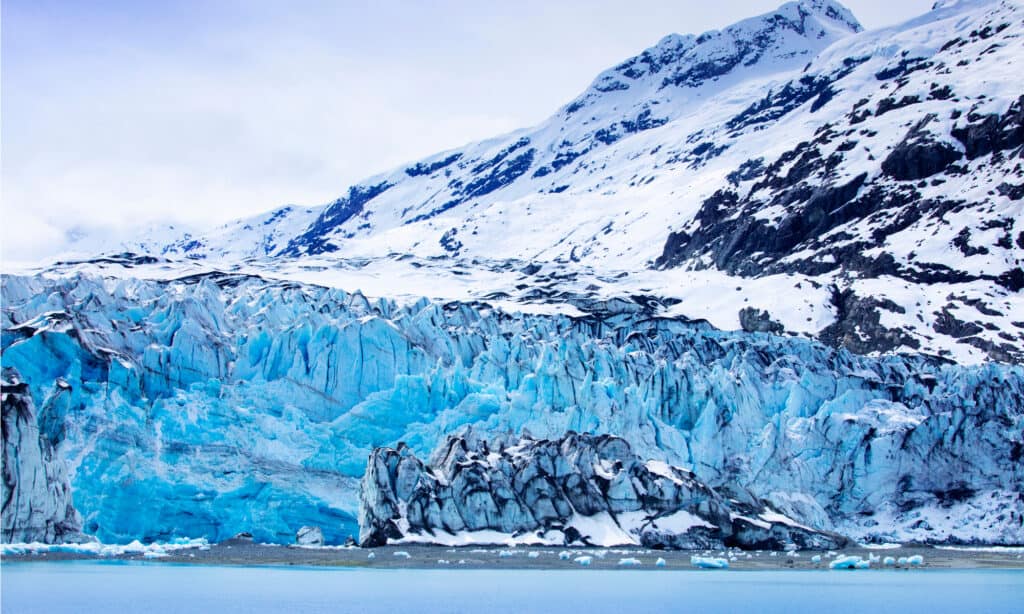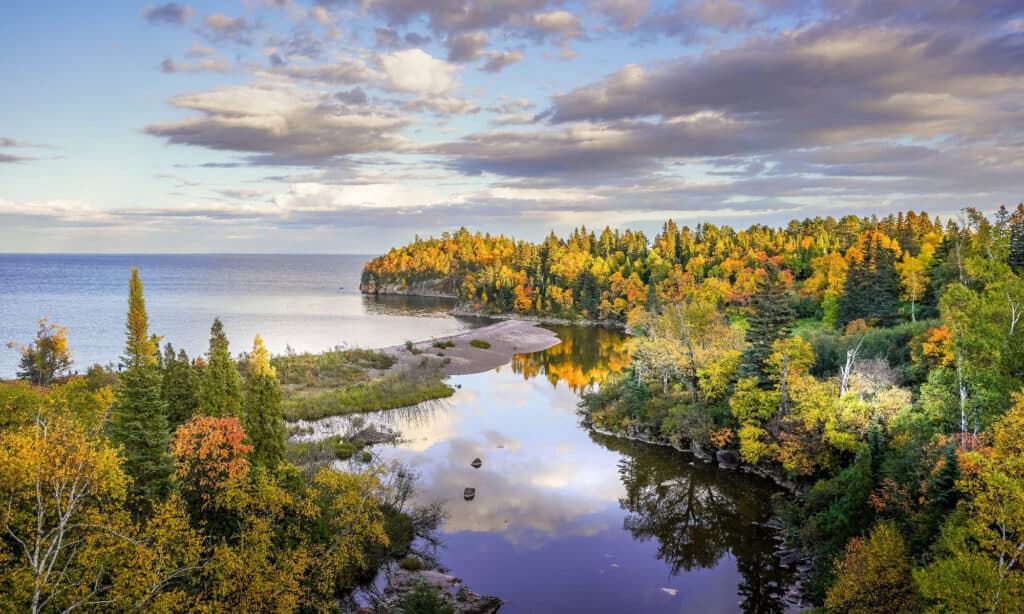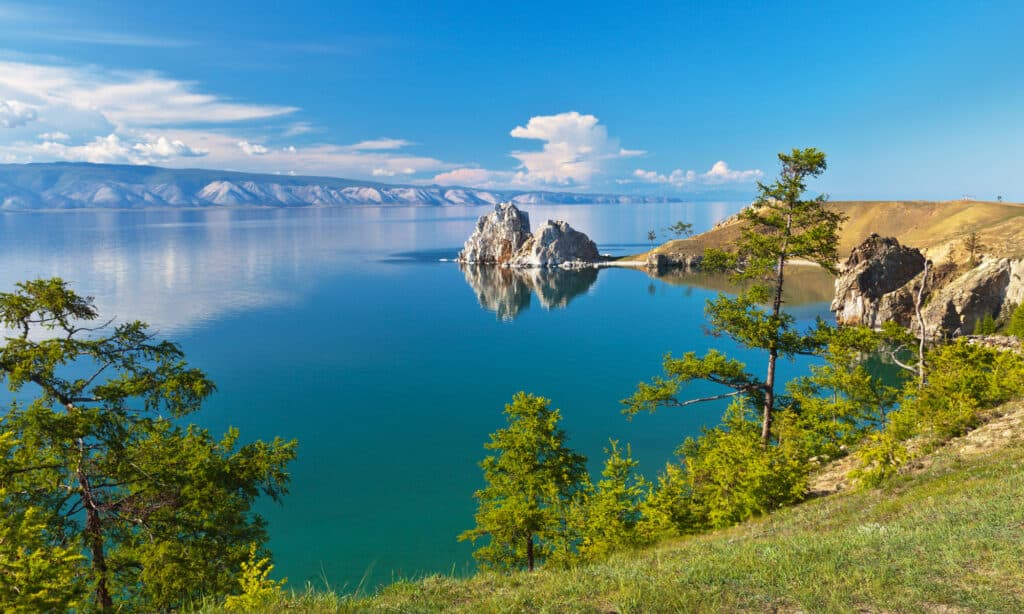The Great Lakes are among the most dominant features of the northern United States. These massive bodies of water are closely connected and form one of the largest groups of freshwater lakes in the entire world. Thinking about the creation of these giants is mind-boggling, but it had to happen at some point! Today, we are going to explore: How Were the Great Lakes Formed and How Long Ago? Let’s get started!
What are the Great Lakes?

With over 21% of the entire earth’s surface freshwater, the Great Lakes are the largest in the United States.
©iStock.com/Posnov
The Great Lakes are a series of connected freshwater lakes that are so large they dominate the landscape and weather patterns of a large part of the United States and Canada. Five lakes make up the Great Lakes, including Lakes Superior, Michigan, Huron, Erie, and Ontario. Each of the lakes is on or near the US-Canada border and is essential to the ecology and economy of the region.
Together, the Great Lakes form the largest group of freshwater lakes by surface area and are the second largest by volume. Adding them up, the Great Lakes contain about 21% of the entire earth’s surface freshwater. Altogether, the surface area of these lakes measures 94,250 square miles, roughly the size of the state of Oregon (96,003 square miles).
How were the Great Lakes formed?

The Great Lakes were formed when receding glaciers deposited meltwater into the eroded land they left behind.
©wu hsoung/Shutterstock.com
Knowing how big they are, the next step for many is to wonder how they were made! Thankfully, science has some answers for us.
The Great Lakes were formed when massive sheets of ice (glaciers) began receding. When they had pulled back far enough to expose the land they had deeply carved, they began to melt, thereby filling the now lakes.
Lakes formed through this process are known as glacial lakes. Often, these lakes are quite large since glaciers themselves are large themselves. Glacial lakes exist all over the world and are continually growing or forming, even today. As the climate across the earth warms (whether from human-caused climate change or natural swings in temperature), glaciers continue to melt and fill the scarred terrain they leave behind even more.
From 1990 to 2018, satellite images reveal a rise of the number of glacial lakes by 53 percent. The fastest growing lakes are in Scandinavia, Iceland, and Russia, but their volume is relatively small compared to other regions.
NSIDC
How long ago were the Great Lakes formed?

All of the Great Lakes were formed during the end Last Glacial period, about 14,000 years ago.
©iStock.com/Susan Rydberg
The Great Lakes were formed near the end of the last ice age, roughly 14,000 years ago.
In order for glacial lakes to form, glaciers need to encroach upon the land and then eventually melt and recede. The most common times for this to happen are during the ice ages. Ice ages (otherwise known as Glacial Periods) are distinct periods of time where carbon in the air is minimal and the average temperature of the earth drops. As a result, glaciers are able to slide forward, grinding and eroding land as they go. In a period of warmth, they will then recede, allowing the troughs to be filled with meltwater.
The last ice age is known as the Last Glacial Period and lasted between 115,000 – 11,700 years ago. During that period of time, the global ice sheets had reached their maximum around 22,000 years ago. After the glacial maximum, the ice sheets started their slow retreat. The end of the Last Glacial Period was around 11,550 years ago, and the Holocene, our current epoch, began.
Incredibly, humans were around during the times that the Great Lakes were formed. During the early stages of the ice age, homo sapiens were primarily relegated to the warm regions of the earth. As the period ended, however, we had extended into Eurasia and Australia. In fact, the ice age allowed humans to cross the exposed land bridge that extended from modern-day Russia to Alaska.
What are some other ways that lakes are formed?

Lake Baikal is the largest freshwater lake by volume and was formed by tectonic activity.
©Katvic/Shutterstock.com
Although glacial lakes are one way that lakes are formed, it isn’t the only way! In the Northern Hemisphere, glacial lakes are the most common since that’s where the large ice sheets were present. Minnesota, for example, is known as the “Land of 10,000 Lakes,” and most of them are glacial.
Tectonic Activity
Another method that occurs happens around active tectonic regions. When the plates of the earth move, they can cause cracks or faults in the crust. These faults are then filled by rivers, oceans, or even rain. Some of the most famous lakes that have been formed through tectonic activity are the Caspian Sea and Lake Baikal. The Caspian Sea is the largest lake in the world, despite it being filled with salt water. Lake Baikal is the largest freshwater lake in the world by volume.
Volcanoes
When a volcano becomes inactive, it can often collapse or fall in on itself. The resulting depression can be filled with rain or snow, creating large, isolated lakes at high elevations. Crater Lake in Oregon is an example of this formation and is currently one of the deepest (and prettiest) lakes in the world.
Rivers
When a river flows through a flat piece of land, it often widens and begins to wind. This pattern is known as “meandering”, and can go on for miles. When a particularly wet season floods the river, it can burst through its banks, causing the loops of the meander can connect. Within moments a body of water is formed, creating a U-shaped lake known as an oxbow lake.
Man (or animal) made
Another common form of lake is a manmade lake. These lakes (often called reservoirs) are formed when humans dam up certain aspects of a river, backing the river up into a large pool behind it. Some of the largest lakes in the US are created using this method, including Lake Mead, Lake Powell, and Lake Oahe. These lakes are created for hydroelectric power, water conservation, and more.
Although humans make lakes, beavers are also excellent terraformers. When a beaver creates a dam in a small river system, it can create large areas of stagnant water.
The photo featured at the top of this post is © JaySi/Shutterstock.com
Thank you for reading! Have some feedback for us? Contact the AZ Animals editorial team.







